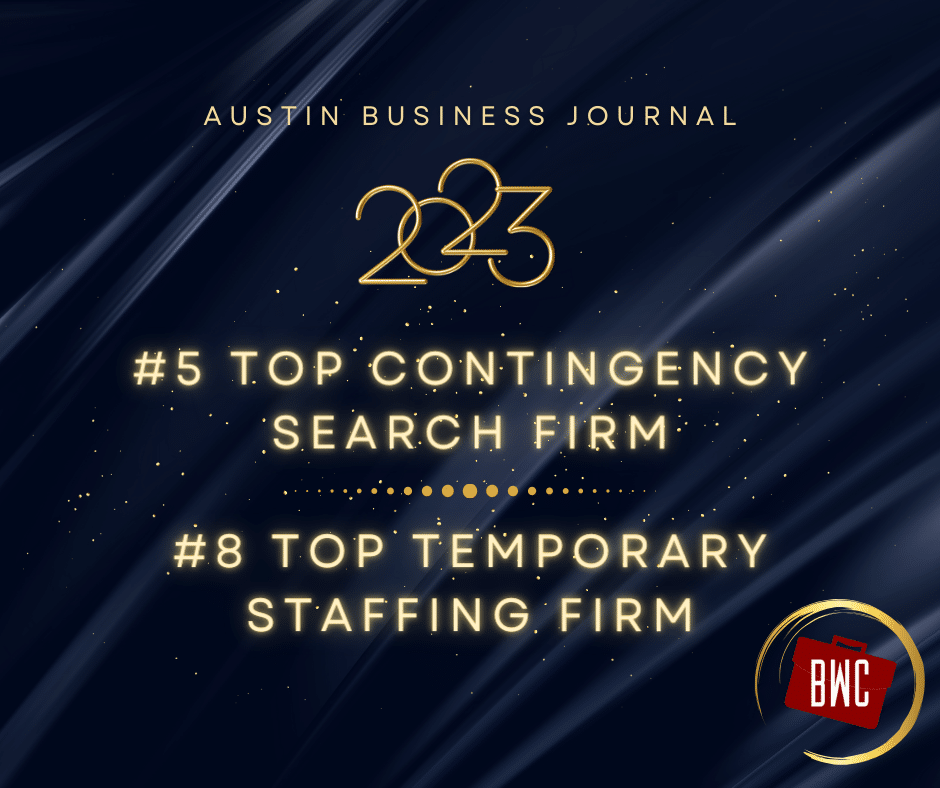Vacant Positions – How Long is Too Long?
A few days ago, I reached out to a new business contact to introduce myself and our company. They had several vacant positions in their group, one of which was posted to the LinkedIn news feed that day. When I asked how their recruiting efforts were going, they seemed rather content – mentioning that they typically “wait about 45 days to see what comes in” before taking more active measures to fill vacant positions. Wow, really? We’re going to post and pray for 6 weeks before taking proactive steps to hire?

Based on my 15+ years in corporate HR leadership roles, I can’t say that I was surprised. But after a couple of years on the consulting side, their thinking really struck me – I can’t imagine getting a job order and just hoping that a good one “comes in” to our website posting after 45 days before taking proactive steps to source, screen, interview and submit top candidates to our clients.
So, why did my contact think that 45 days and a “post and pray” strategy is considered a reasonable approach? After a bit of research, it turns out that their thinking seems to be consistent with what’s happening in typical corporate talent acquisition today, and they may be even more aggressive than others!
Recent research by CEB, a global best-practice insights and services company, indicates that the average time-to-fill for white-collar positions is now 68 business days, an increase of 26 business days over 2010.
Longer process, but better hires? Not quite…
Well, since we’re taking more time to fill these positions, we must be doing a better job selecting the best candidate, right? Wrong. CEB’s research also indicates that optimum quality of hire tends to occur at around 31 business days, and after that, the quality of hire begins to diminish.
Well, it doesn’t cost us anything to do this, so what’s the harm, it’s not hitting our HR budget! Ironically, that part is likely true – vacancy costs don’t typically hit HR’s budget. The true impact of vacancy cost hits the hiring department’s productivity, synergy, output, and turnover, but these “soft costs” don’t register directly in the accounting budgets that we track in corporate FP&A exercises each month. So, what difference does it make?
The true organizational cost of maintaining a vacancy for several weeks is staggering – but since it’s not included in quarterly financials, we pay virtually no attention this tremendous drain on organizational output.
Research cited in a LinkedIn content article indicates that, in 2014, the calculated vacancy cost for an Accountant earning a salary of $59,000 per year equates to a monthly minimum of $9,800, while the vacancy cost calculated for a Manager earning $91,000 annually rises to a minimum of $15,100 per month.
Let that sink in for a moment. Is that in any department’s budget? No, we just assume that’s what it takes, we can’t do any better, and the under-staffed team just has to cope with it. Is that really our hiring strategy?
What does leaving a position vacant really cost?
So, back to my conversation. My contact is willing to wait 45 days (1.5 months) to begin taking active efforts to fill their manager-level vacancy (salary well over $91k). This means that the company is going to incur more than $22,500 in organizational costs ($15.1k x 1.5 months, or 24.7% of annual salary) before corporate practices and expectations force them to take proactive steps to fill the position.
And even then, the full hiring cycle must still occur to close the vacancy, resulting in an additional 23 days at a minimum to fill the position (68 days per CEB, less 45 days “passive time”). That’s roughly another $15.1k in vacancy costs, for a total of $37,600 (41.3% of annual salary) for each white-collar position filled using the “typical” timelines and cost calculations noted above. So, we’re paying 41.3% of salary in vacancy costs – wow.
Let’s get this straight: We’re taking longer to do a worse job in selecting the right person for the job, with no understanding or regard for the actual cost of allowing a position to remain open for an extended period. Folks, something is broken in the typical corporate recruiting model when we’re generating hiring expectations, timelines and incurred costs like these.
But hey, it’s not hitting HR’s budget – a pretty good person comes along eventually, right? They’ll have to wait.
That is an outdated and inaccurate way of thinking that simply does not work in today’s highly competitive talent market. Taking a passive approach to hiring increases time to fill, negatively impacts the department and costs us the opportunity to connect with and potentially hire scores of qualified candidates (who were just hired by our competitors using a more proactive talent acquisition strategy, by the way).
A passive approach just won’t do.
Ask your hiring manager these questions: 1) Would you rather wait 68 days to fill a position, or would your team be better off getting that position filled in 30 days or less? 2) What negative outcomes will result from keeping the position open for that additional 6 weeks?
See what the hiring manager says, and then reevaluate whether the passive “68 business days to fill” hiring model is working.
At Becker Wright Consultants, we strive to provide 2-3 on-target candidates within about 7 – 10 business days of receiving a signed contract and job order, and we don’t often miss that internal goal. That’s the difference in working with a team of experienced, professional recruiters. We leverage our internal network of contacts, source dozens of passive candidates, screen and interview effectively, and work tirelessly to get top talent in front of our clients’ hiring managers within a couple of weeks, and sooner in many cases.
Reach out to us today so that we can change your company’s hiring expectations – 68 days is way too long!






Leave A Comment